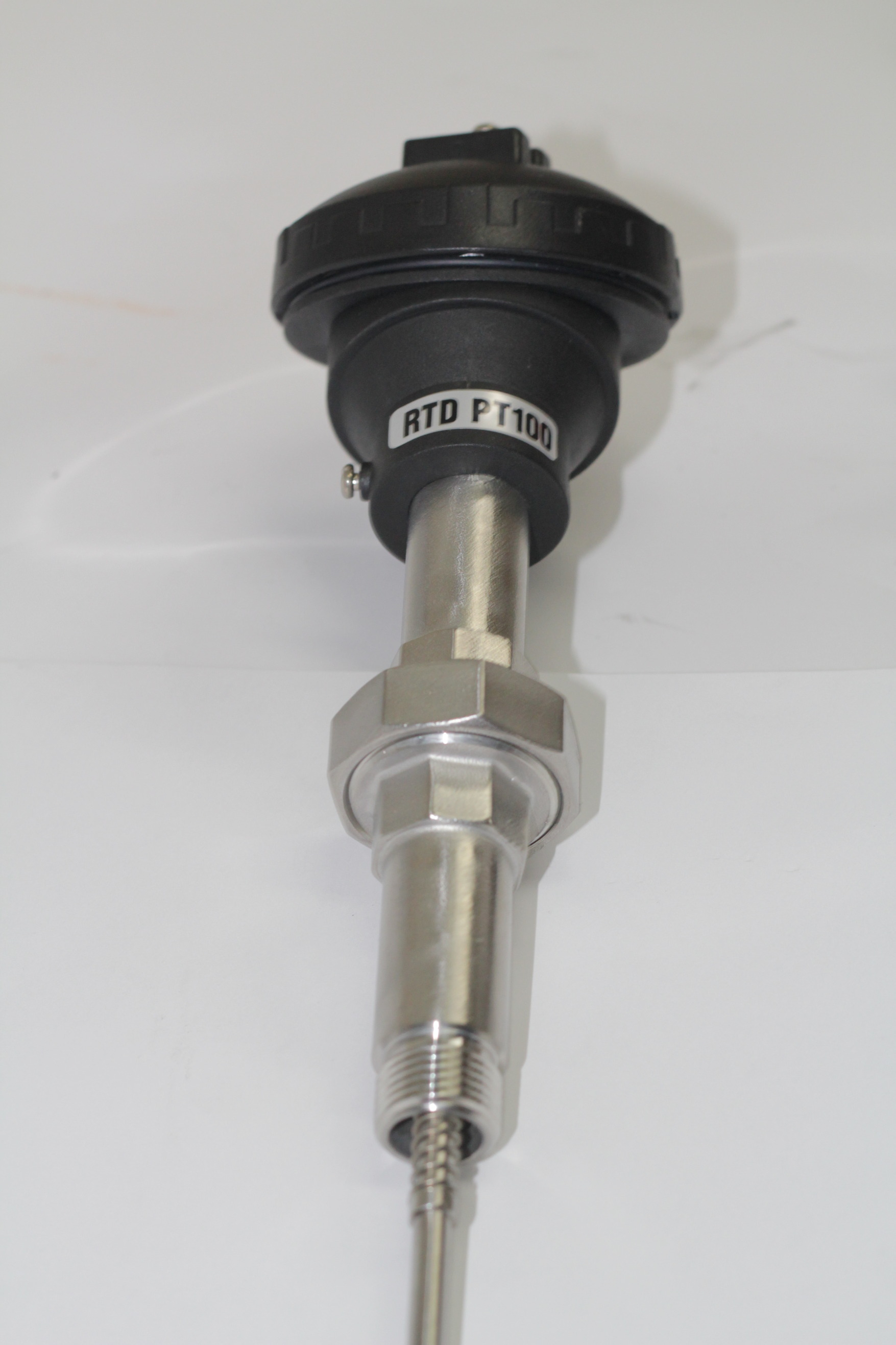What is a Platinum Resistance Thermometer (PRT)?
A PRT is a temperature sensing device. It measures temperature using the resistance of a piece of pure platinum wire. Platinum is typically used due to its stability and ability to be reduced to fine wires.
A PRT is one type of RTD. The difference is the material it constructed with, and hence it gets its own name PRT. The sensing element is an electrical resistor that changes resistance with temperature. The resistance change is well understood and repeatable. The resistance of the platinum wire is measured via passing an electrical current (AC or DC) through it, and measuring the voltage with a suitable device. This reading output is converted to temperature via a calibration equation. Attached to the sensing element are extension wires so the electrical resistance can be measured from a distance. The sensing element is typically placed inside a protective sheath (normally stainless steel). What makes platinum sensing elements unique, is they can be exposed to temperatures up to approximately 850°C.
The temperature that a PRT can successfully measure is dependent on the materials included in the construction. It is typically the wire and insulation that has the lowest temperature capability. Our PRTs are constructed in two types – low temperature and high temperature. The low temperature constructions contain PTFE insulated, nickel plated copper wire which is used to connect to the RTD element. Alumina powder is used to fill the stainless steel tube to support the element and it is sealed with epoxy to ensure moisture does not ingress. This construction method limits the temperature to 250°C.
For a PRT that can be used up to 650°C, the construction method is using nickel wire and ceramic insulators or mineral insulated metal sheathed (MIMS) cable which contains nickel wires. Alumina powder is also used in this construction process, to support the element. Sealant choice depends on the temperature rating of the transition point. With careful sealing of the element, use of Inconel® sheathed MIMS cable, the temperature maximum can be extended to approximately 850°C.
The most common PRT is the PT100. The PT indicates platinum and the 100 references the length and diameter of the platinum wire used in construction. The resistance of the device at 0°C is 100 ohms and the resistance changes by 0.385 ohms per degree Celsius. Typically, with a measuring current 1mA, at around 0°C a PT100 sensor experiences a voltage drop across its terminals of approximately 100 mV. For every degree Celsius change, this changes by approximately 0.4 mV.




